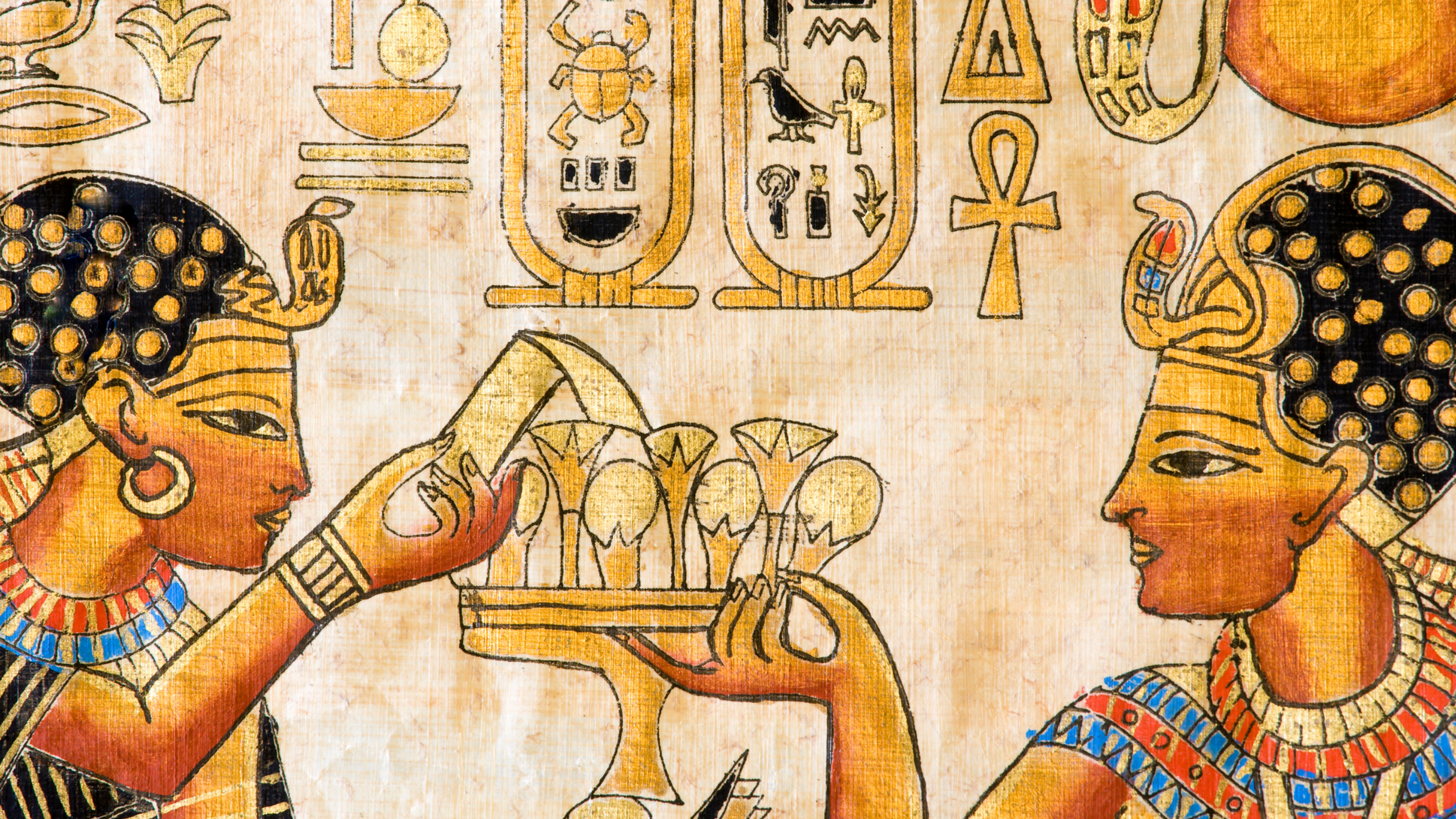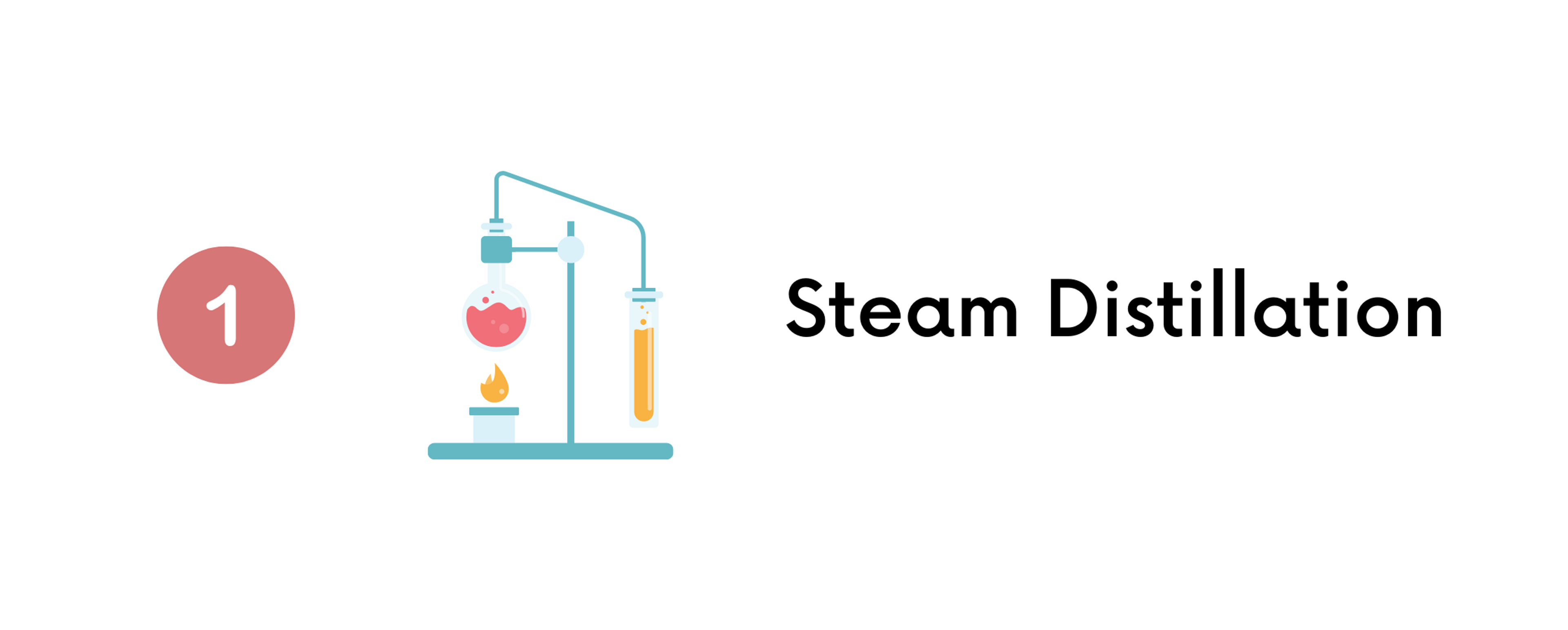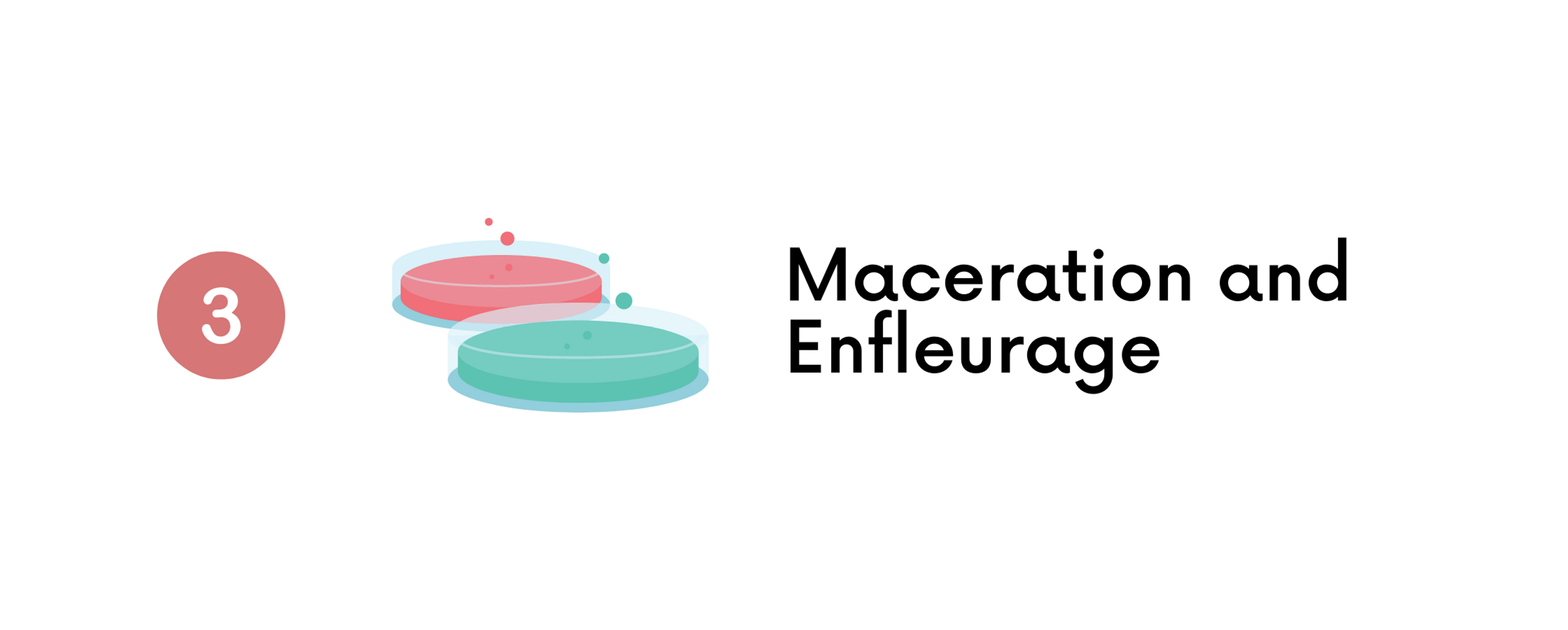
Essential Components: How Perfume is Created From Scratch
A detailed exploration of ingredients, techniques, and the creative genius behind every bottle.
The process of making these intoxicating fragrances goes far beyond just mixing scents together.
Becoming proficient in fragrance creation demands technical expertise, a sharp olfactory nose, and inventiveness.
Digging deeper into how perfume is made, you'll discover it's about sourcing quality ingredients sustainably, using precise extraction methods, and understanding the nuances between synthetic and natural perfumes.
All that while keeping an eye on supply chains in this multi-billion dollar industry.
Our love affair with fragrances hasn't faded over millenniums!
The Origines of Perfume Making
As far back as 2000 BCE, humans have been experimenting with perfumery.
Imagine walking through the bustling markets of ancient Mesopotamia, enveloped in a myriad of scents ranging from musk to myrrh. Created from the distillation process of plant and animal-based compounds, primarily for religious rituals, medicinal purposes, and personal adornment.
This intriguing tale continues with ancient times of Egyptians mastering the art of perfumery. The Egyptians were pioneers in extracting essential oils from botanicals like frankincense, myrrh, and jasmine through methods such as maceration and enfleurage.

Over time, perfume notes evolved from ritual ceremonials into a form of personal expression and luxury. Fragrances began to be used for cosmetic and aesthetic purposes, not just by priests and pharaohs but also by the general populace.
Greeks picked up where Egyptians left off, refining techniques while introducing new aroma combinations and production methods. Besides personal beautification and religious purposes, they use fragrances even in athletics to scent the athletes and the prizes they competed for.
Romans adopted perfume wholeheartedly. Bathing establishments had dedicated rooms for applying scented oils before leaving the premises – taking the luxury bathing experience up a notch.
Fragrances took on new life during the Renaissance period. This era saw significant advancements such as distillation processes, which brought us closer to modern-day perfumes by allowing the creation of stronger concentrations without losing subtlety or complexity within blends.
Ingredients Used to Create Perfumes
- Essential oils are the heart and soul of any perfume, contributing the actual scents that make a fragrance unique. Typically, 15-30% of the perfume’s composition. They may be extracted from plants, animals, or synthetically made compounds. Their concentration can vary based on whether the end product will be an Eau de Parfum, Eau de Toilette, or another type of fragrance, as each has a different concentration of oils.
- Alcohol acts as a solvent for the oils, making it easier to spray and helping to disperse the fragrance. It also helps to preserve the perfume. The alcohol content can range from 60-95%, depending on the type of fragrance you're making and the concentration you desire.
- Water is used to dilute the alcohol and fragrance oils, lessening the intensity of the fragrance and making it easier on the skin and nose. Usually around 5-10%, though this can also vary based on the type and concentration of the fragrance.

Optional Ingredients:
- Glycerine: Acts as a fixative and gives the perfume a smoother feel.
Antioxidants like Butylated Hydroxytoluene (BHT): To prolong the shelf life of the perfume. - Fixatives: Ingredients like mosses or non-synthetic alternatives can be used to stabilize the more volatile fragrance notes and extend the lifespan of the scent on the skin.
Natural Ingredients to Make Perfumes
Nature has been mankind's first pharmacy, and when it comes to perfumes, the contribution of natural ingredients is remarkable. Think of lavender fields, rose gardens, and spice markets; these nature scents form the backbone of many iconic fragrances.
Extracted oils from these plant substances have been used for centuries to give perfumes their distinctive scents.
These natural compounds often have additional benefits, such as calming or invigorating effects, which make them even more special. Different types of plants offer unique aromatic profiles. For instance, roses lend sweet floral notes, while sandalwood imparts rich woody undertones.

Animal substances like musk, ambergris, and civet have been treasured for their unique, intense aromas that serve as fixatives, making scents last longer. They offer more than just a scent; they also provide a certain texture and sillage (the trail left by the fragrance) to perfumes.
Synthetic Ingredients to Create Perfumes
Not all fragrance oils can be sourced from the earth. Synthetic scents have the advantage of consistency, as they are created in a controlled environment. This makes them popular not just in perfume dupes, but also in other cosmetic products like body lotions and soaps.
Synthetic ingredients can replicate endangered plant scents, thus contributing to conservation efforts. It's an incredible chemistry between science and sensibilities, one that’s key in modern perfume making.
Here are 5 of the most commonly used synthetic ingredients in perfumes:
- Iso E Super aroma chemical has a woody, cedar-like smell and is popular for adding a velvety, diffusive quality to fragrances. Try our perfume dupe with only this ingredient (Molecule 01 Impression)
- Calone-Often is used to create aquatic, oceanic, or watermelon-like scents, Calone gives a fresh and airy character to fragrances.
- Galaxolide-This is a synthetic musk known for its clean, sweet, and slightly woody aroma. It’s often used as a fixative to enhance the longevity of other notes in the perfume.
- Ethylene Brassylate- musk-like scent with floral facets, Ethylene Brassylate is often used as a fixative or base note in a wide variety of fragrances.
- Hedione-Derived from jasmine, Hedione imparts a fresh, floral jasmine-like note and is used in a wide variety of perfumes to add brightness and lift.

Are Synthetic Ingredients Dangerous?
Synthetic ingredients undergo rigorous testing for safety before they're permitted for use in perfumery. This testing includes evaluation for skin irritation, allergic reactions, and long-term health impacts.
Organizations such as the International Fragrance Association (IFRA) set guidelines to ensure that fragrance ingredients, both natural and synthetic, are used within safe limits.
How to Extract Perfume Oils
Once these raw materials have been sourced, they need to be processed into their most potent form - essential oil. This is achieved through either steam distillation or solvent extraction processes.
The soul of any perfume lies in its oils, and extracting these oils is a crucial step in the manufacturing process.
So how do perfume makers reach the essence of a scent?
Steam Distillation
The steam distillation process involves boiling a plant or another aromatic substance to produce steam. This steam then goes through a cooling process, where it condenses back into water.
The essential oils are then separated from the water, resulting in a pure, concentrated form. This method is one of the most ancient and continues to be popular for its efficiency and the high-quality oils it produces.

Expression
Fruits like lemons and oranges are full of aromatic oils, but how do you extract them? The answer is expression. This mechanical method involves compressing the peels of fruits to squeeze out the fragrance oils.
It's particularly popular for extracting citrus oils and is known for producing oils of extremely high quality.

Maceration and Enfleurage
Enfleurage is a more delicate process, perfect for flowers that are too fragile for steam distillation. Petals are placed on a layer of odorless vegetable fat or animal fat, which soaks up the essential oils over a period of time.
Maceration follows a similar concept but involves soaking plant materials in warm animal fat. The fats are then treated to separate the oils.

Solvent Extraction
Some scents can't withstand the heat of steam distillation. For these delicate substances, solvent extraction is the method of choice. Using solvents like ethanol or hexane that dissolve aromatic compounds within the flora.
Plant materials are placed in a large drum and saturated with a solvent like hexane. The solvent evaporates, leaving behind pure concentrated oil.
Meticulous handling is crucial because some components might be heat-sensitive, requiring delicate treatment. Once the material is thoroughly soaked, the solvent is evaporated, leaving behind the pure perfume oils.

Decoding the Perfume Manufacture: Step-by-Step
Ever mused over the making of your favorite perfume?
Creating a signature scent involves designing an olfactory symphony with top accords as an opening ceremony, heart notes serving to harmonize the scent, and base notes providing the foundational scent that remains after.
The process demands skillful balancing for a distinct identity while embodying a creative vision. Perfume perfection is pursued.
From field to bottle, the creation of fragrances starts with selecting the right essential oils, which are derived from various plants, flowers, and even animals.
Now that we’ve got the oils, how do we turn them into that captivating bottle of perfume sitting on your dresser?
Start With a Clean Bottle
Quality control starts at the very beginning. Perfume bottles are not just about aesthetics; they have to be sterilized and free of any contaminants to preserve the integrity of the perfume.
Pour in the Alcohol
Ethyl alcohol is the main chemical used as a base in perfumes. It helps to dilute ingredients and acts as a carrier for the oils. Depending on the concentration of the perfume, you may add a higher or lower amount of alcohol.
Choose and Combine Aromas
This is where the magic happens. Chief perfumers or "noses," as often called, balance a variety of scents to create a unique fragrance. Whether it's a single-note perfume or a complex blend of natural and synthetic scents, this is the stage where artistry comes to life.
Different ingredients play different roles in fragrance creation. Some, like mosses and spices, may act as antioxidants, while others, like animal substances and certain plant extracts, may serve as fixatives. Understanding these roles is crucial for creating a balanced and long-lasting fragrance.
Perfume oils obtained from extraction, whether natural, synthetic, or animal-based, are then carefully measured and added to the alcohol base. The quantity and order in which these oils are added can dramatically affect the final scent.
Let the Scent Mature
Ever heard of a perfume that gets better with age? The aging process, also known as maturing a fragrance, is a vital step. After blending, the perfume is stored in a cool, dark area for several weeks to several months. This allows the various notes to mingle and the perfume to develop its final character.
Complete with Dilution
Finally, water and glycerine are often added to the blend to dilute the scent to the desired concentration. Glycerine also adds a silky texture, giving your perfume that luxurious feel.

Most Used Plant Ingredients to Make Perfume
Did you know that among all identified species of flowering plants, just about 2,000 have essential oils that are appropriate for perfume-making?
Plant compounds play a pivotal role in perfumery, providing a vast array of aromatic nuances that perfumers can blend and modify to create unique scents.

Here are some of the most commonly used plant ingredients in the perfume industry:
- Roses- Possibly the most iconic flower from all scents, roses offer a rich, romantic scent that ranges from sweet to slightly spicy. There are different varieties used in perfume-making like the Damask rose and Centifolia rose.
- Jasmine- With its intensely floral and slightly sweet aroma, jasmine is often considered the king of flowers in perfumery. It is a keynote in many famous fragrances.
- Lavender- This herb offers a fresh, floral, and slightly camphoraceous scent that is often associated with relaxation. It's a staple in aromatic and fougère fragrances.
- Sandalwood- precious wood, Sandalwood provides a creamy, warm, and slightly sweet scent that is highly valued for its ability to add depth and longevity to perfumes.
- Bergamot- This citrus fruit is a favorite for top notes, providing a bright, fresh, and slightly bitter aroma often used in chypre and citrus fragrances.
- Patchouli- With its earthy, woody, and slightly sweet scent, patchouli is a base note that can provide depth and richness to a fragrance.
- Ylang-Ylang-This tropical flower has a heady, sweet, and slightly fruity aroma. It's often used in floral compositions for its exotic and sensual character.
- Vetiver- Sourced from the roots of the vetiver plant, this ingredient has a woody, earthy, and slightly smoky aroma. It's a favorite for adding depth and complexity to fragrances.
- Geranium- With its rosy and slightly citrusy aroma, geranium is often used to enhance floral compositions or add a fresh facet to other scents.
- Frankincense- Also known as olibanum, frankincense is a resin with a balsamic, slightly lemony, and woody aroma. It's often used in oriental and incense fragrances.
- Vanilla- Derived from the pods of the vanilla orchid, vanilla provides a sweet, creamy, and slightly woody scent that is beloved in gourmand and oriental perfumes.
- Orris Root- Sroced from the roots of the iris plant, orris root has a violet-like, powdery, and slightly woody aroma, making it a prized ingredient in high-end perfumery.
Common Animal Ingredients to Create a Perfume
Animal-based components have a long history in perfume making. Ingredients like musk and ambergris, add depth and complexity to fragrances. These animal substances are often used as fixatives, helping the scent to last longer.

Animal abuse has led to synthetic or plant-based alternatives for many such ingredients. Yet, there’s no denying the unique aroma profile that animal-based elements bring to the table. Here are the most used animal ingredients in the perfume:
- Musk- Originally obtained from the gland of the male deer musk, it serves as a potent fixative in perfumes. Today, ethical considerations and laws have mostly shifted the industry towards synthetic musk.
- Ambergris- Colloquially known as 'whale vomit' - holds high esteem for its unusual fragrance profile and rarity. This waxy substance originates from the digestive system of sperm whales, highly prized for its ability to fix scents and improve their longevity.
- Civet-A civet is a musky substance secreted by the glands of the African Civet Cat. Because of ethical issues surrounding its harvest, synthetic versions are usually used today.
- Castoreum- Sourced from the castor sacs of the North American beaver, castoreum has a leathery scent and is often used to create a "natural" animal or leathery note in perfumes.
- Hyraceum- Also known as "Africa Stone," this is a petrified and aged form of urine and feces from the Cape hyrax, a small mammal from Africa. It's used for its animal and complex aroma, adding depth to perfumes.
- Honeycomb- While not a glandular secretion, beeswax and honeycomb are often used for their sweet, waxy notes in perfumery.
- Silk- Derived from silkworms, silk protein or hydrolyzed silk can sometimes be used in perfumery as a fixative or as a note to add a silky, powdery feel to the composition.
- Goat Hair-In very traditional Middle Eastern perfumery, the scent of clean, sun-dried goat hair is sometimes used as a distinctive note.
It's important to note that the use of many animal-derived ingredients has become controversial due to ethical and sustainability concerns. Synthetic or plant-based alternatives are increasingly being used to replicate the olfactory characteristics of these traditional animal ingredients.
Supply Chains in the Fragrance Industry
Sourcing is the first and perhaps the most crucial aspect of the supply chain in perfume making. Ingredients come from various parts of the world— whether you want roses from Bulgaria, sandalwood from India, or bergamot from Italy.

Due to increasing awareness around sustainability and ethical sourcing, there is growing pressure on perfume makers to be transparent about where and how these raw materials are sourced.
The next steps are extraction and distillation, often done close to the source of the raw materials. Then, the concentrated oils and other ingredients undergo quality control before being shipped to manufacturing units.
Advanced technology is increasingly being used in these stages for more precise quality control and to predict supply needs better.
The manufacturing stage might happen in an entirely different part of the world from where the ingredients were sourced, adding another layer of complexity to the supply chain.
So raw materials are turned into the fragrances we recognize in their final form. It involves mixing and aging, among other processes, before the perfume is bottled, packaged, and made ready for distribution.
Finally, the packaged products are distributed globally through various retail channels, both online and in physical stores. Direct-to-consumer models are also gaining popularity, shortening this end of the supply chain and providing more control to perfume brands over customer experience and data.
The Future of Perfume Creation
AI could facilitate ultra-personalized fragrances. By analyzing your skin's chemistry, diet, and even genetic makeup, algorithms could recommend or create a fragrance that is uniquely yours.

A new wave of 'green chemistry' could offer sustainable synthetic alternatives that mimic the complexities of natural scents, significantly reducing the pressure on endangered plants and animals.
Biotechnology will enable the mass production of lab-grown alternatives to natural and animal-based perfume ingredients. Scents that were once rare and costly will become more accessible.
How To Smell Good
Why Are Perfumes Expensive
How to Apply Cologne
Types Of Perfume
Eau de Parfum
Eau de Toilette
Eau de Cologne
Eau Fraiche
How to Make Perfume Last Longer
Where to Spray Perfume
How Is Perfume Made?
Best Niche Fragrance Houses and Perfumes
- Price Beyond Fragrance: Demystifying the Factors Behind Luxury Perfume Costs
- How Many Types of Perfume Actually Exist?
- From Morning Mist to Evening Echo: 12 Hacks to Empower Your Scent Presence
- Best Ways to Apply the Cologne-According to Our Cologne Experts
- Perfume Celebrities: Meet The Most Famous Perfume Brands In The World
- Perfume Riddles: A Dichotomy Between Eau de Toilette and Eau de Parfum